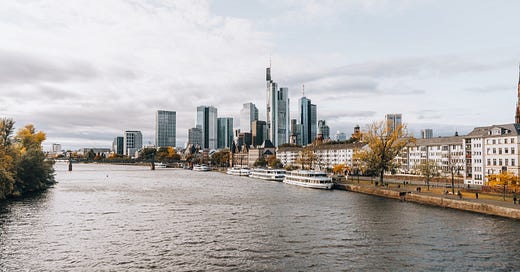7 ways Real Estate Developers can redesign vacant office buildings:
Redesigning how people live, work and play
Photo Credit: Pexels
Real Estate Developers, landlords, banks, and municipal governments are scrambling to avoid a commercial real estate crisis as office buildings remain below normal occupancy levels, some are completely vacant.
Referred to as the “Potential Death of the Office” by Cushman & Wakefield nearly 20 percent of office space is empty across the United States, and some projections suggest that more than 300 million square feet of U.S. office space could be obsolete by 2030. The pandemic has shown that people are capable (and in some cases, in favor) of working in a remote setting.
Goldman Sachs found that the share of US workers who are at home has stabilized in the 20%-25% range, below the pandemic peak of 47% but well above the pre-pandemic average of 2.6%.
In the past three years, the occupancy rate has only dipped to 86% from 90%.
Goldman estimated that 17% of the office space under lease is due to expire by the end of 2024, with 11% expiring in 2025, and more than 35% after 2030.
Re-imaging work, life and play with a thoughtful approach to redevelopment
While corporations have downsized their office footprints drastically over the past few years, including the threat of lease expirations companies are trying to decide whether to return employees back into the office or downsize and move elsewhere.
The so-called “crisis” can be averted if real estate holders would see this as an opportunity. For example, Municipalities across the nation are trying to fill those spaces back up. In New York, city officials are transforming empty office buildings into apartments around parts of Midtown.
7 ways Real Estate Developers can redesign vacant office buildings:
Affordable Housing
Home values and rents in California are among the most expensive in the nation, and the state has one of the highest rates of homelessness. The housing crisis has been a direct result of rising costs due inflation, decades of stagnant salaries across all industries, including the country’s inability to keep up with the housing demands of a continually increasing population.
Earlier this year in California, Governor Gavin Newsom announced an update in the state’s efforts to build more housing with the selection of McCormack Baron Salazar, Inc. as lead developer to convert three state office buildings along Capitol Mall in Sacramento into affordable housing.
In 2019, to help address California’s Housing crisis, Governor Newsom issued Executive Order N-06-19 to prioritize conversion of excess state properties into affordable housing.
Turning Buildings into farms:
Vertical farming involves growing crops in vertically stacked layers inside a building. Vertical farms save water, prevent pesticide pollution, and enables crops to avoid extreme weather conditions.
Creator Houses
The rise of podcasts and influencers makes an easy case for turning more buildings into creator houses. Studios designed for content creation, conference spaces large enough to host in person gatherings from brand events to panels.
Innovation Centers
Innovation Centers provide resources and support to startups and small businesses at all stages of development. You're not just creating a place for people to work, but a place where innovation and communities can thrive.
Youth Centers
For the “what's wrong with today's youth crowd”, well for starters many of today's youth do not have access to the same amenities people had growing up. That includes Youth Centers. These pivotal institutions provide after-school activities that prevent delinquent behavior and promote productivity. Youth centers have always been the foundation of community building, where friendships were formed, where children could take part in recreational and cultural activities.
Cooperative Small Business Hubs
I talked about this model in my newsletter
What is a Cooperative?
Cooperatives are a sustainable approach to business and economic impact of communities. Coops are not purely driven by profits, but ensure equity, fairness and justice in the marketplace.
How do cooperatives work?
Cooperatives work in different ways depending on the business model. Examples of cooperatives are; credit unions, the members are part owner of the financial institution. Grocery stores, the people who work at the grocery store are the owners. But make no mistake, investors still invest into cooperatives and still earn profits.
Working Cafés
Cafés used to be the place to plug in and work however, over the years many cafes have opted out of accommodating patrons who use the space for work. Some frustrated Café owners expressed their issue with people who use their businesses to work from “They would plug in their headphones, they wouldn’t speak to anybody, they often wouldn’t buy anything, and they would just sit forever,” Nat Esten, the bar’s co-founder, said.
Cafe closures such as Starbucks left remote workers without places to work from. In some cases Starbucks had closed the stores because its employees engaged in union activities or to discourage employees from doing so. At least seven of the 23 stores nationwide identified had unionized. Over the years Bay Area Starbucks stores have started covering their power outlets to prevent customers from plugging in their electronics.
Working Cafés enable remote workers to access a space curated for working and socializing. Cafés are meant to be a place where you can go to buy a cup of coffee, read a book, work, study, or catch up with a friend.
Developers can breathe new life into vacant buildings; though there are many considerations to factor like costs and zoning laws. However, many states have already passed zoning laws to accommodate these changes, specifically for Real Estate Developers. Just some food for thought.



